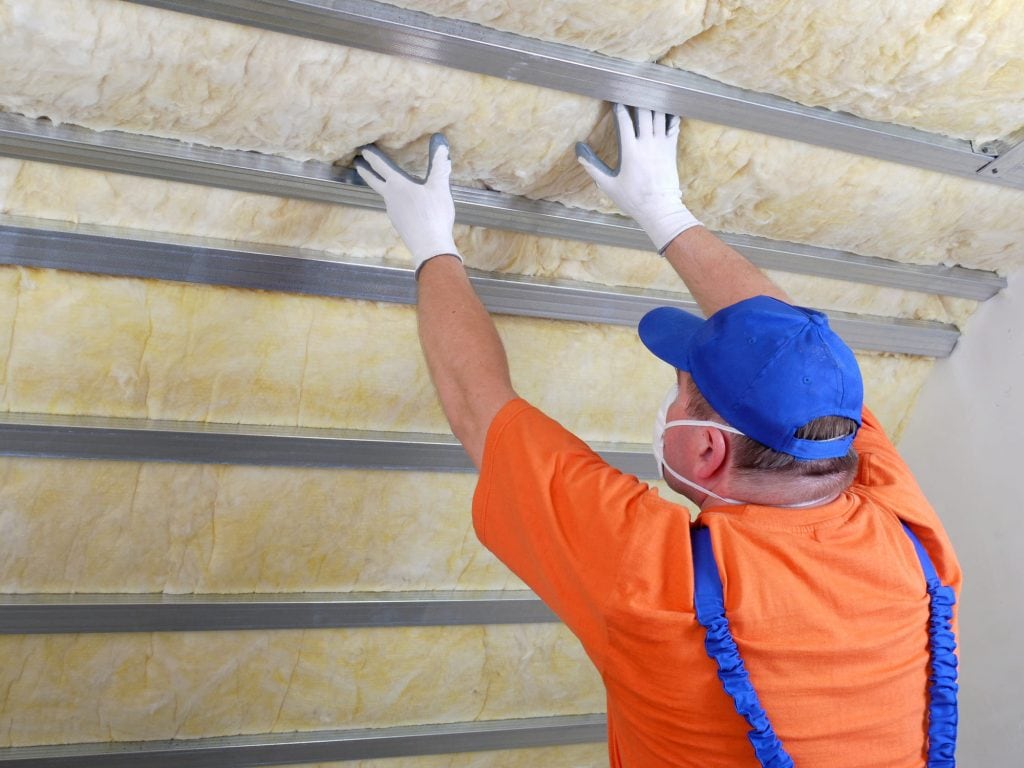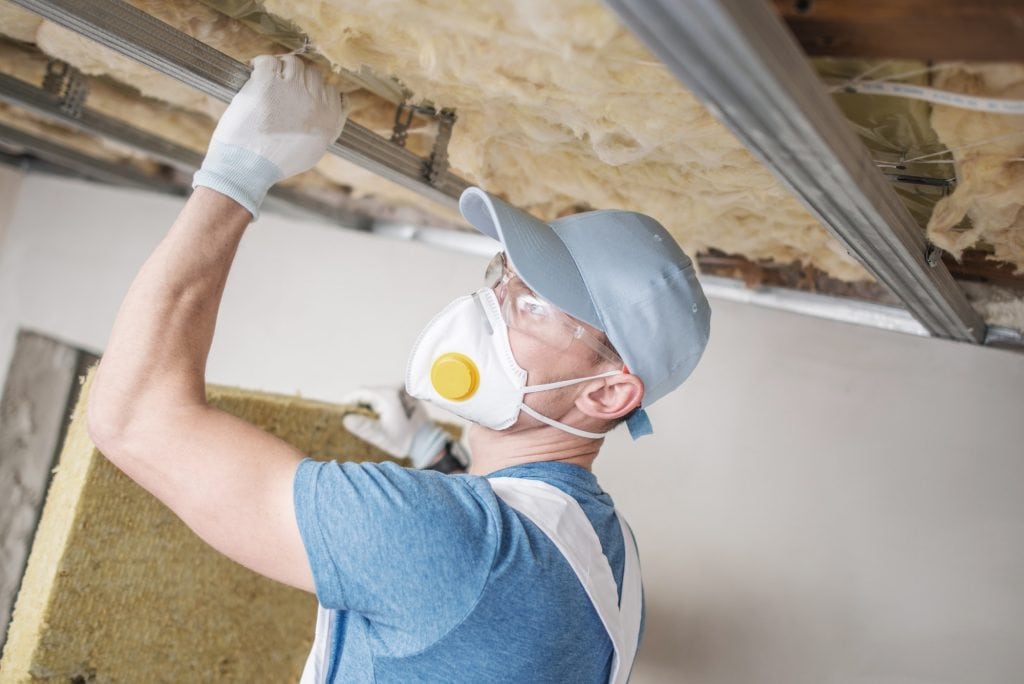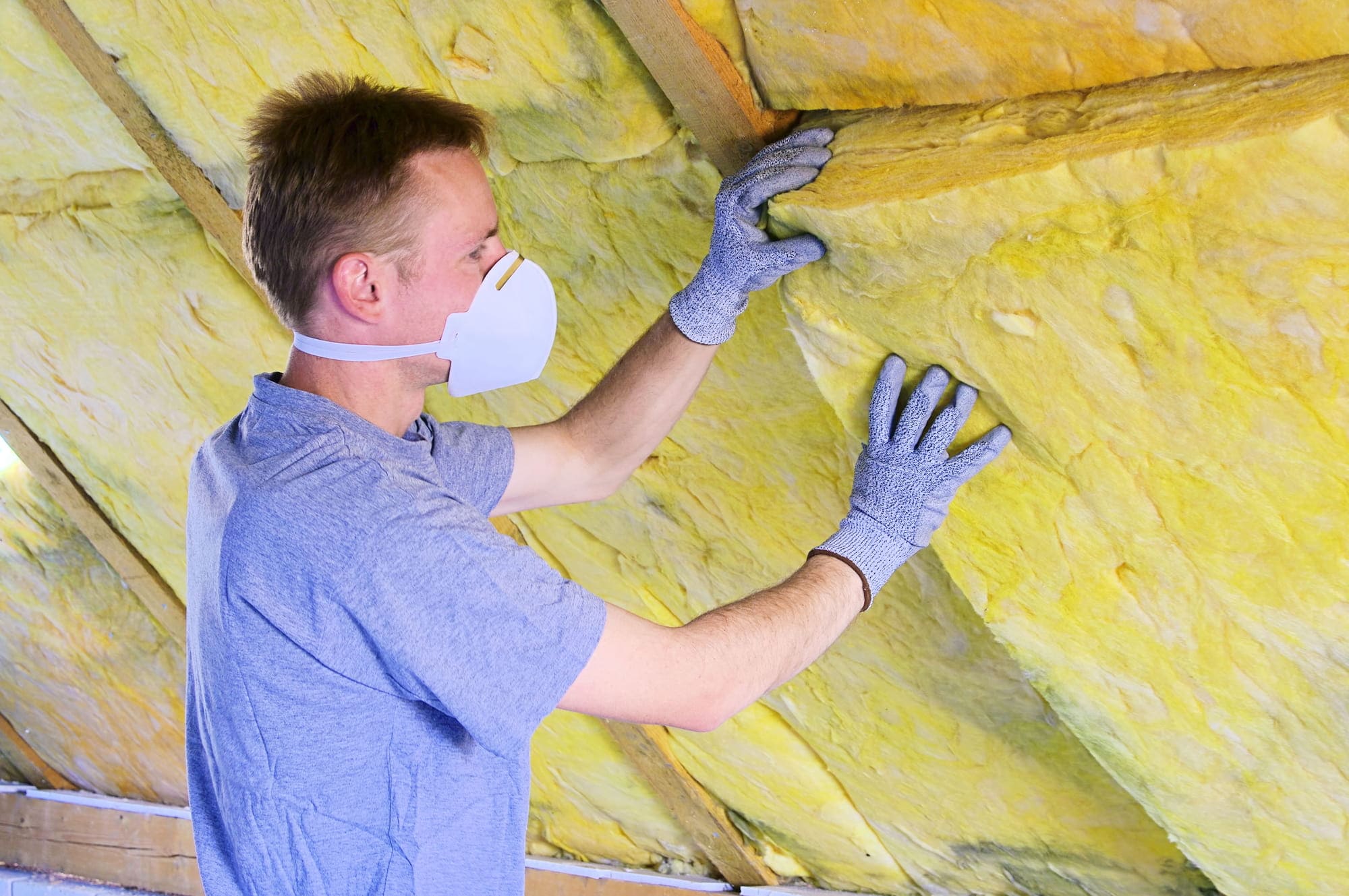A well-insulated home not only offers warmth and comfort, but also helps save on utility bills. When it comes to insulation, however, many homeowners overlook one crucial area – the roof. Roof insulation plays a significant role in maintaining a consistent temperature inside your home, and inadequate insulation can cause significant heat loss and increase energy bills.
That’s why it’s essential to have comprehensive knowledge of roof insulation. In this guide, we’ll cover everything you need to know about roof insulation, from its types to tips on how to maintain it, all to help you make an informed decision and keep a cozy and energy-efficient home all year round.
What Is Roof Insulation, and Do You Need It?
At its core, roof insulation refers to the strategic integration of thermal materials into the roof structure. This integral process aims to diminish heat transfer, amplify energy efficiency, and sustain comfortable indoor temperatures, irrespective of external climatic conditions.

But why is this important? Picture this: heat tends to rise during colder climates, potentially escaping through inadequately insulated attic spaces. Conversely, during warmer climates, the sun’s rays heat the roof, which can cause indoor temperatures to soar if not effectively protected. Insulating your roof acts as a barrier, preventing this transfer of heat, ensuring a consistent indoor environment, and ultimately resulting in savings on energy bills.
Different types of insulation products cater to varied needs and building codes. Some of the most commonly used insulation materials include:
- Fiberglass Insulation: Comprised of fine strands of glass, fiberglass insulation is both moisture-resistant and non-flammable. It offers a comfortable temperature inside, regardless of harsh outdoor conditions.
- Spray Foam Insulation: As the name suggests, spray foam insulation is sprayed into place, expanding to fill up cavities. It provides both insulation and air-sealing benefits.
- Reflective Insulation: Reflective insulation mainly reflects radiant heat, making it an excellent choice for attic spaces in areas that experience high temperatures.
Whether you reside in a humid or cold climate, there is an insulation solution tailored to your needs.
Factors To Consider When Selecting the Right Insulation for Your Roof
Choosing the right roof insulation is important for energy efficiency, as well as the durability and effectiveness of your home. Here are the key factors to help you make your decision:
- Climate and Location: The insulation you choose must cater to the specificities of your location. For colder climates, insulation that effectively retains heat is vital, while warmer climates might need insulation that blocks the heat.
- Roof Type and Structure: Different roofing structures, whether slope roof insulation or flat roof, will require different types of insulation.
- Budget Considerations: While investing in high-quality insulation can offer long-term energy savings, budget-conscious homeowners might opt for affordable insulation that provides a budget-friendly good R-value.
- Building Codes and Regulations: Depending on your location within the United States, building codes might dictate the minimum R-values for insulation or other construction details.
- Moisture Resistance: Insulation should prevent moisture accumulation, which is especially vital in humid climates. Products like mineral wool or foam board insulation can resist moisture damage and thwart mold growth.
- Soundproofing: Insulation can also play a role in minimizing external noises. If your home is in a bustling area or near a main road, consider insulation products renowned for their acoustic performance.
- Fire Resistance: Some insulation products, such as fiberglass and rock wool, are inherently fire-resistant, providing an added layer of safety to your home.
- Installation Complexity: While blown-in and spray foam insulation might require specialized application equipment, roll insulation or batt insulation packages can be more straightforward for DIY projects.
- Environmental Impact: Considering insulation made from recycled materials or natural fibers can be the perfect choice for those conscious of their carbon footprint.
- Durability and Longevity: Some materials, like polyiso insulation, offer longer lifespans compared to others.
Benefits of Roof Insulation
Investing in roof insulation goes beyond merely retaining heat or blocking out summer’s warmth. Here are the multifaceted benefits of insulating your roof:
- Reduced Heating and Cooling Costs: Effective insulation can save energy. With less heat loss in winter and reduced heat gain in summer, you can significantly reduce utility costs.
- Enhanced Indoor Comfort: An adequately insulated home ensures a consistent indoor environment, preventing drastic temperature fluctuations and guaranteeing a comfortable temperature year-round.
- Decreased Carbon Footprint: By reducing the need for constant heating or cooling, your home’s energy consumption diminishes, leading to a smaller carbon footprint.
- Conservation of Natural Resources: Efficient insulation translates to less reliance on heating fuels and electricity, promoting the conservation of vital natural resources.
- Potential Long-Term Savings and Return on Investment: While there might be an initial cost, the cumulative savings from reduced utility bills can result in a positive ROI over time.
- Enhanced Property Value: Homes with high-quality insulation can appeal to potential buyers, recognizing the benefits of reduced energy costs and enhanced indoor comfort.
- Sound Insulation: Beyond temperature regulation, certain insulating materials can help reduce external noise, ensuring peace and tranquility within your living space.
- Moisture Control: Effective insulation, coupled with vapor barriers, can prevent potential issues like mold growth, wood rot, and other moisture-related damages.
Roof insulation is a critical component for anyone seeking to make their homes more energy-efficient and comfortable.
How To Prepare for Roof Insulation Installation

Getting started with roof insulation installation involves more than just choosing the perfect product. Proper preparation is essential to ensure a smooth process and the results you want. To assist you, we’ve put together a quick guide to help you get ready:
Assess the Condition of the Roof
- Identifying Any Leaks or Damages: Water leaks can jeopardize the efficiency of insulation. Check the roof decking, sheathing, and other building components for any moisture or water damage signs. Look for stained ceiling joists or damp patches on the attic floor.
- Conducting Necessary Repairs Prior to Insulation Installation: Address damages quickly. It’s important to make sure the roof and wall cavities are in good condition before insulating.
Determine the Required Insulation Thickness and R-Value
- Understand the Concept of R-Value: The R-value measures the insulation’s resistance to the flow of heat. The higher the R-value, the better the insulation’s heat flow resistance and thermal properties.
- Calculate the Appropriate Insulation Thickness Based on Regional Requirements: Different regions in the United States have varied R-values recommendations. For instance, colder climates might require insulation with an R-value of 6.5 to 7 or more. For instance, foam board insulation and polyiso roof insulation have different thicknesses for similar R-values.
Prepare the Workspace and Ensure Safety Measures Are in Place
- Clear the Attic or Roof Space: Remove any old insulation materials, debris, or any other obstructions. If you’re installing over-existing insulation, make sure it’s dry and in good condition.
- Wear Appropriate Protective Gear During Installation: Insulating a roof can expose you to dust, fibers, and chemicals. Always wear protective clothing, gloves, a mask, and safety goggles. Ensure the workspace is well-ventilated to maintain good air quality.
Consider Additional Measures for Enhanced Efficiency
- Air Sealing: Before installing insulation, seal off any air leaks. This helps prevent conditioned air from escaping or unconditioned air from entering your home.
- Install Vapor Barriers: In humid climates, a vapor barrier can prevent moisture accumulation within the insulation layer, preventing mold growth and other moisture-related issues.
How To Maintain Roof Insulation
Properly installed roof insulation can provide many advantages, such as energy savings and a cozy indoor atmosphere. However, regular maintenance is necessary for it to remain efficient and last long. Here’s how to keep your roof insulation in great condition:
1. Regular Inspection and Maintenance Practices
Schedule periodic inspections, preferably every year or after significant weather events. Inspections can help detect potential problems early on.
2. Check for Any Signs of Damage or Deterioration
Look for signs such as damp patches on ceiling joists, stained attic decking, or mold growth. These could indicate moisture accumulation or air leaks. Ensure the insulation isn’t compromised by pests, which can sometimes nest in attic spaces.
3. Address Insulation Gaps or Air Leaks
Over time, some insulation materials, like mineral wool or fiberglass insulation, may settle or compact, reducing their effective insulation levels. Seal gaps with appropriate materials like spray foam insulation to prevent conditioned air from escaping.
4. Explore Options for Upgrading Existing Insulation
As technology and building codes evolve, so do insulation products. It might be time to consider upgrading if your insulation doesn’t meet current standards or your energy bills have gradually increased.
5. Add Additional Layers of Insulation
Adding an extra layer might enhance your home’s energy efficiency, depending on the type of insulation you have. For instance, adding roll insulation or batt insulation over loose-fill insulation can be beneficial.
6. Upgrade to More Advanced Insulation Materials
If your home has older insulation types, consider switching to more modern and energy-efficient options like rigid foam boards or polyiso insulation.
7. Discuss the Importance of Periodic Reevaluation and Improvements
As homes age and undergo renovations, their insulation needs can change. Regularly reevaluate your insulation’s performance, especially if you notice a change in indoor temperatures or rising utility costs.
Maintaining roof insulation is about preserving the material and ensuring it functions optimally. A well-insulated roof is a shield against excessive energy consumption, protecting both your pocket and the planet.
Key Takeaways
Roof insulation is important for your home’s energy efficiency, comfort, and well-being. Homeowners can learn about roof insulation basics, its types, and its significance. With this knowledge, they can make informed choices about installing and maintaining their insulation, which helps make their homes more energy-efficient and comfortable. In summary:
- Roof insulation helps maintain comfortable indoor temperatures by minimizing heat loss or heat gain.
- There’s a wide array of insulation materials, each with its unique properties and applications.
- Factors like climate, roof structure, and budget should influence the selection of insulation.
- Proper preparation is vital for the efficient installation of insulation.
- Regular maintenance ensures that insulation retains its effectiveness over time.
If you’re keen on improving your home’s energy efficiency, roof insulation is a vital component to consider. Furthermore, understanding these aspects can be invaluable if you plan on buying or selling property.
Reach out to a seasoned eXp real estate agent for tailored guidance on homes with roof insulation on the market. You can also perform a custom home search on eXp.
FAQs: Roof Insulation
Roof insulation is an essential part of building and renovating a home. To simplify this topic, we’ve put together a list of frequently asked questions to answer common concerns and questions.
What is best for roof insulation?
The best insulation depends on the climate, roof type, and budget. Spray foam and fiberglass insulation are popular choices due to their energy efficiency and versatility.
What is the R-value for roof insulation?
The R-value measures the insulation’s resistance to heat flow. For roofs, recommended R-values vary by climate, with colder climates requiring higher R-values for optimal energy efficiency.
Is roof foam insulation worth it?
Yes, spray foam insulation offers excellent energy efficiency, seals air leaks, and provides moisture resistance, making it a valuable choice for many homeowners.
What is the cheapest way to insulate a roof?
Blanket insulation, like batt or roll insulation, is often the most affordable. However, the total cost depends on material quality and installation labor.
Does extra roof insulation make a difference?
Absolutely. Extra insulation can enhance energy efficiency, reduce utility bills, and improve indoor comfort, especially in extreme climates.
Is R30 enough for roof insulation?
R30 is suitable for warmer climates. However, colder regions may require a higher R-value, like R38 to R60, to achieve optimal insulation.
How thick is R30 roof insulation?
R30 insulation, especially fiberglass batts, is typically around nine to ten inches thick, though thickness can vary based on the material.
What is the safest roof insulation?
Mineral wool and cellulose insulation, made from recycled materials and treated for fire resistance, are considered safe and eco-friendly options.
How thick should foam be for roof insulation?
The thickness varies based on the desired R-value. For an R30 rating, spray foam insulation might need a 5 to 6 inches thickness.
Can you over-insulate a roof?
Yes. Over-insulating can lead to moisture issues and reduced ventilation and can be counterproductive in terms of energy efficiency.
Can I insulate my roof myself?
While DIY is possible for some insulation types like rolls or batts, professional installation is recommended for optimal results and safety, especially for materials like spray foam.





